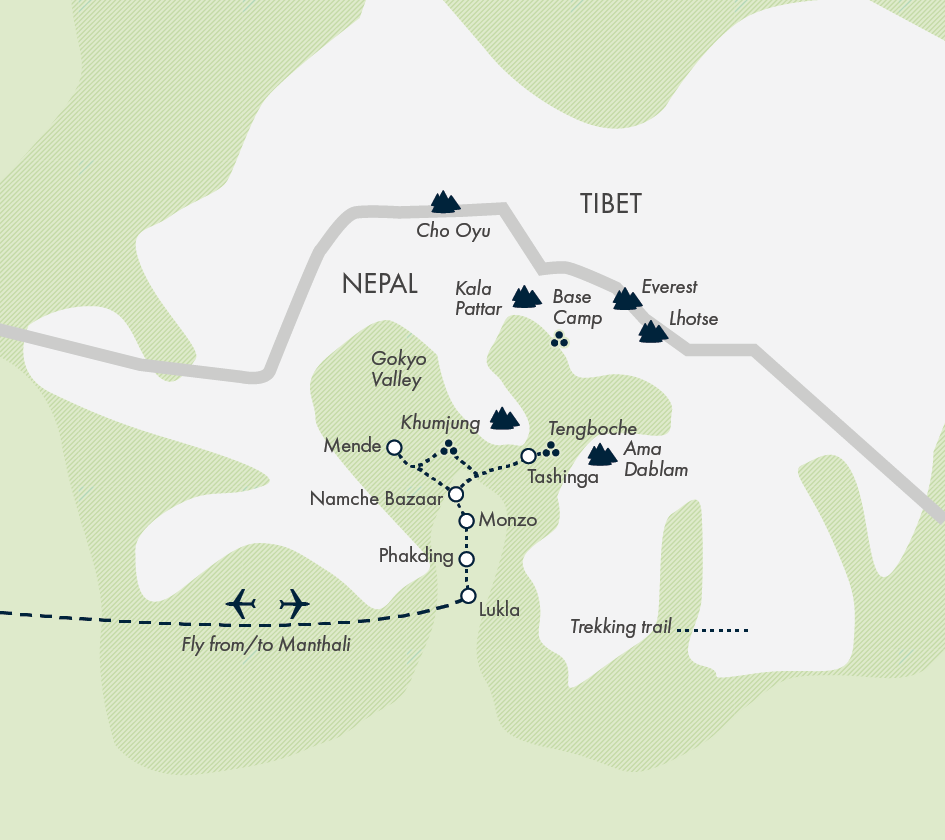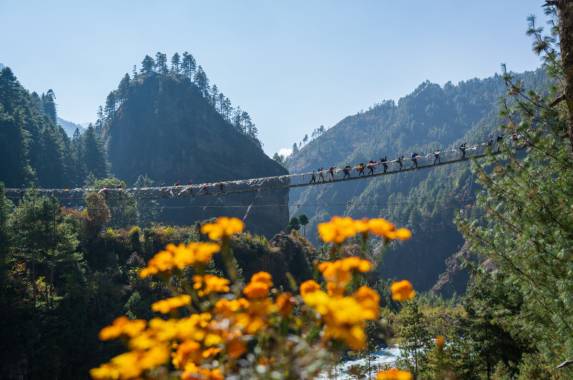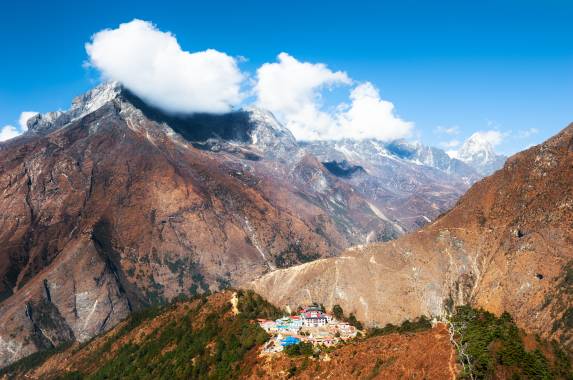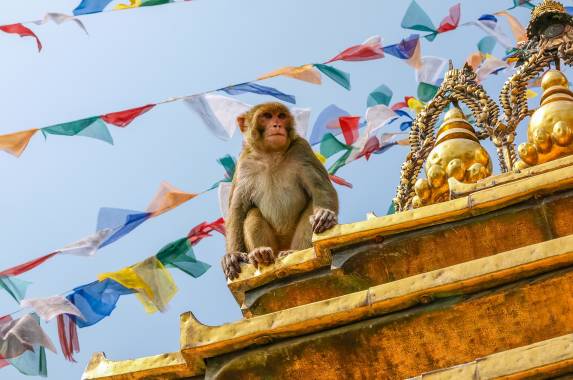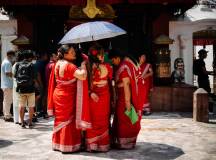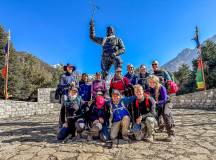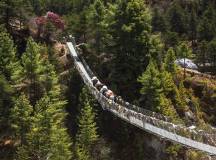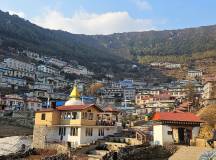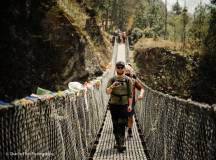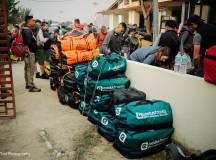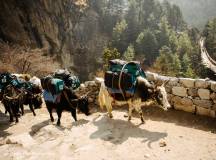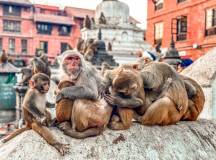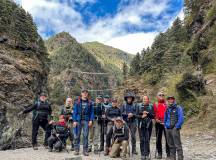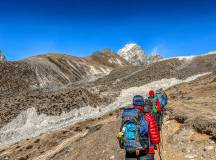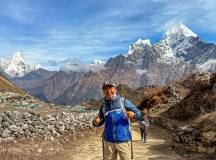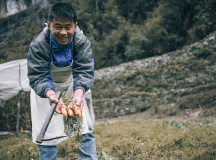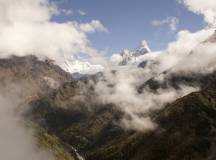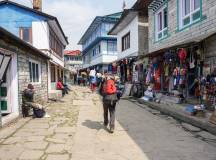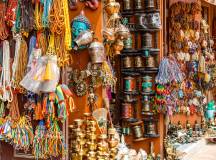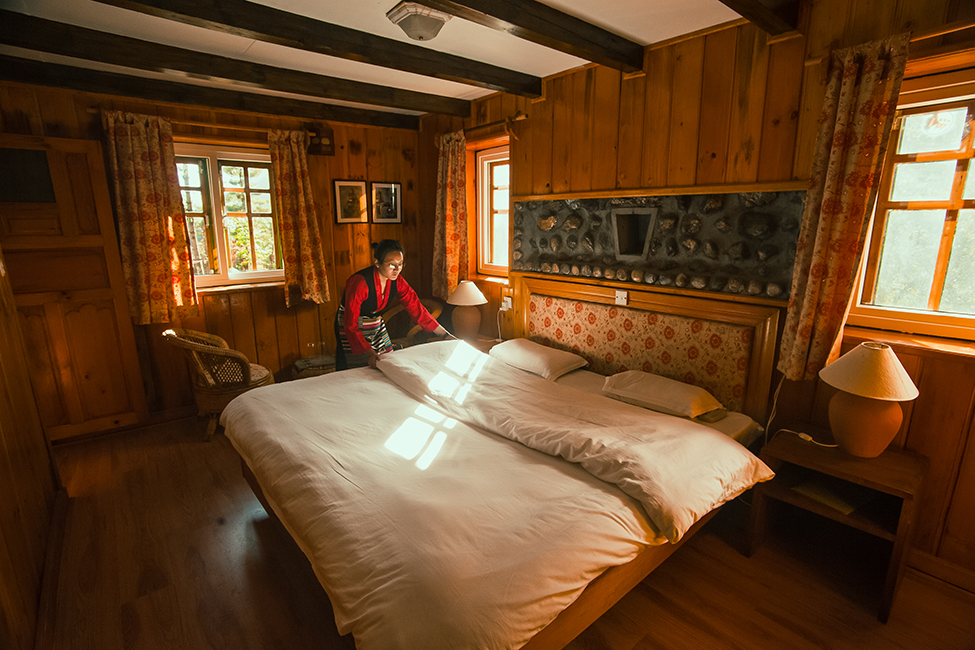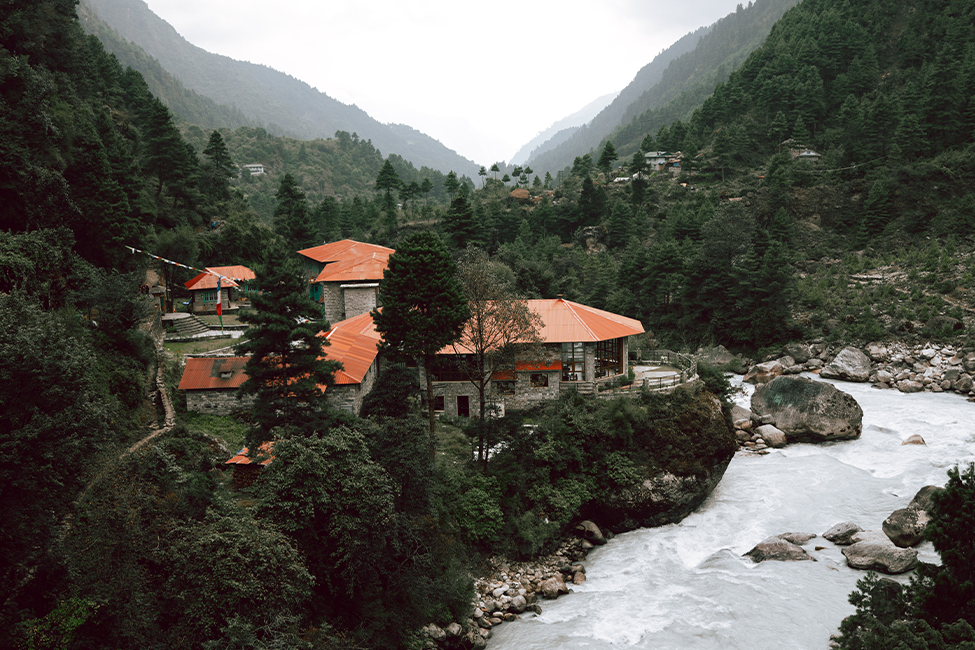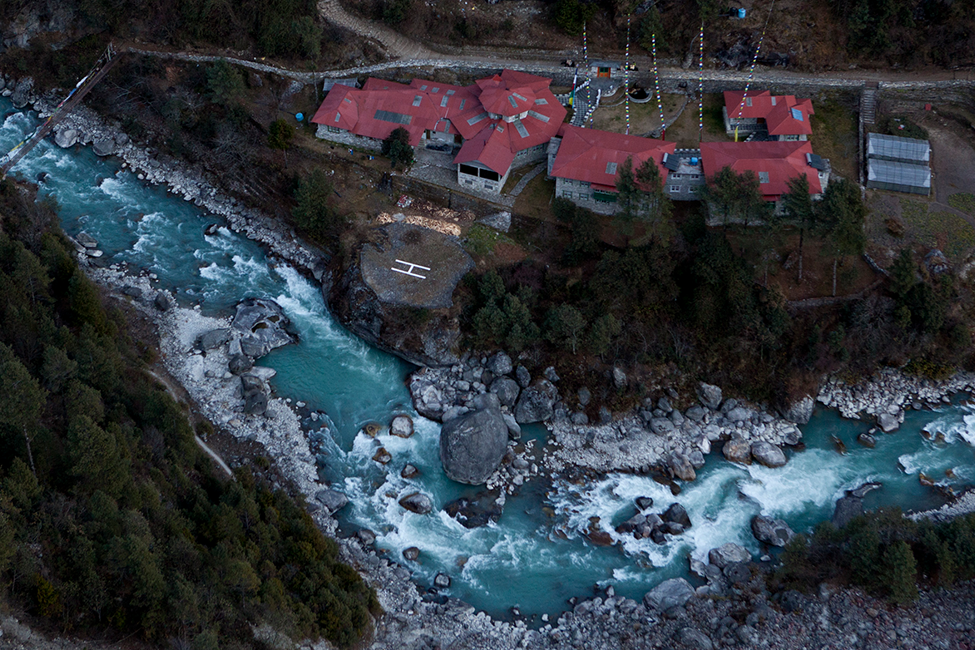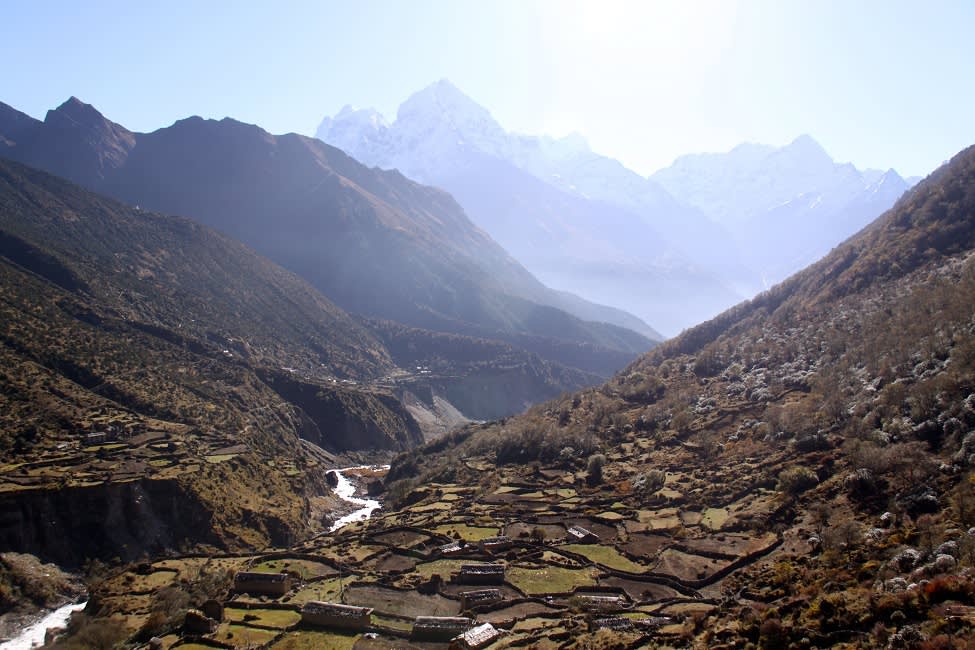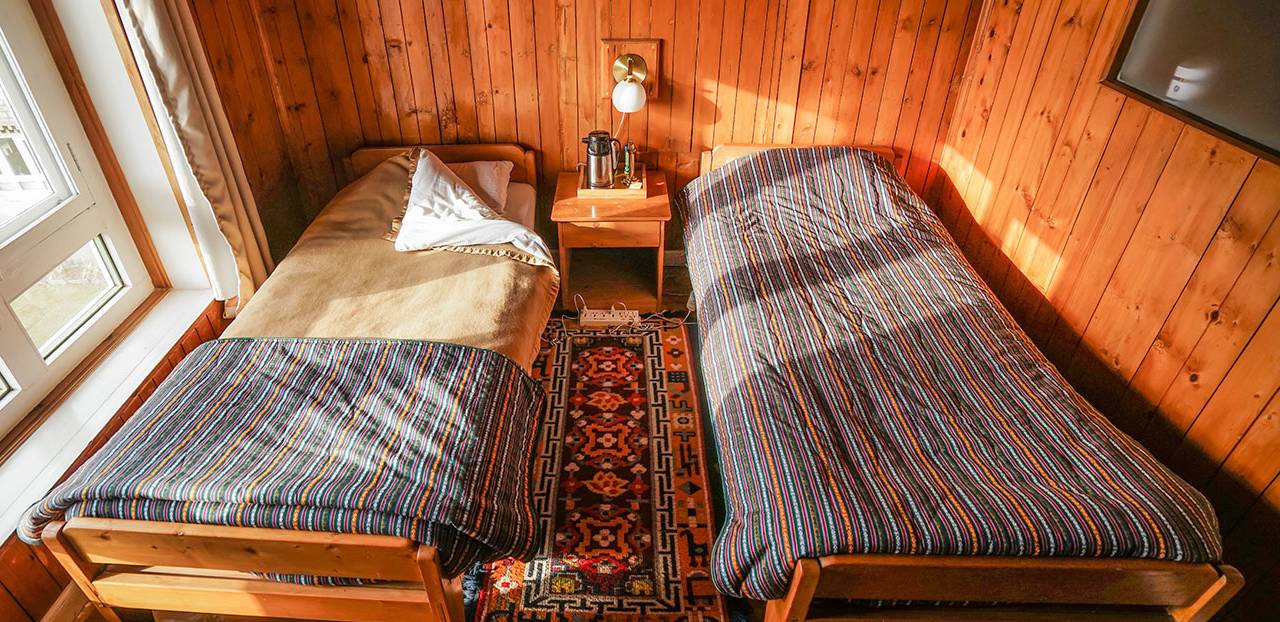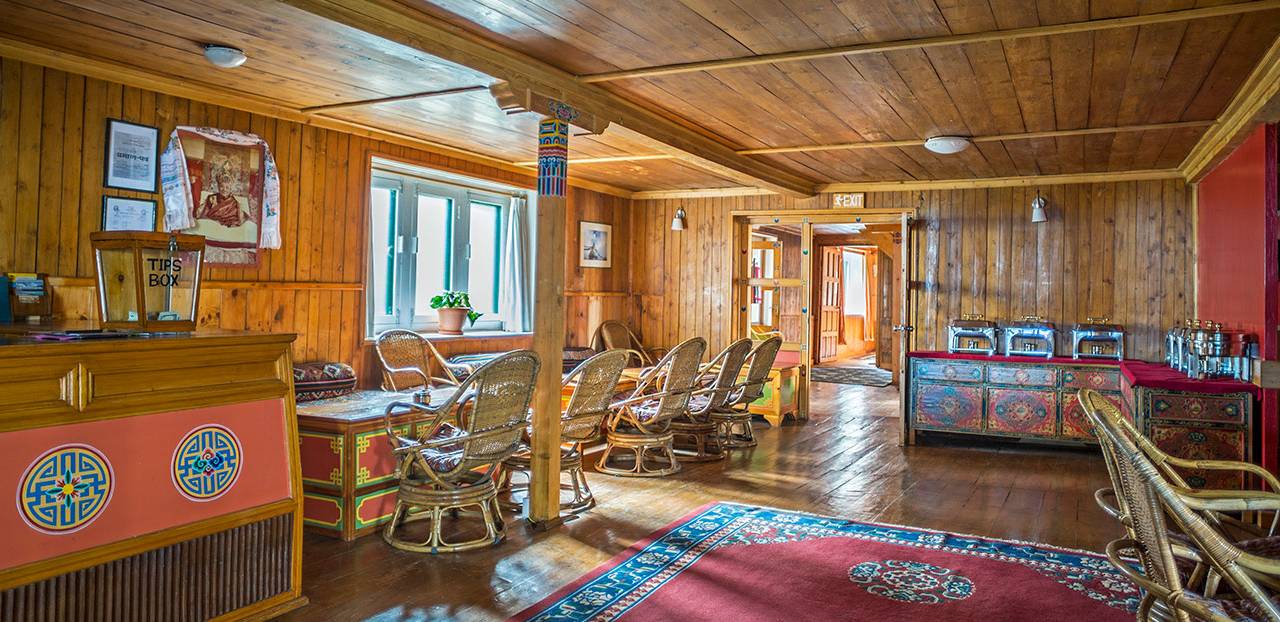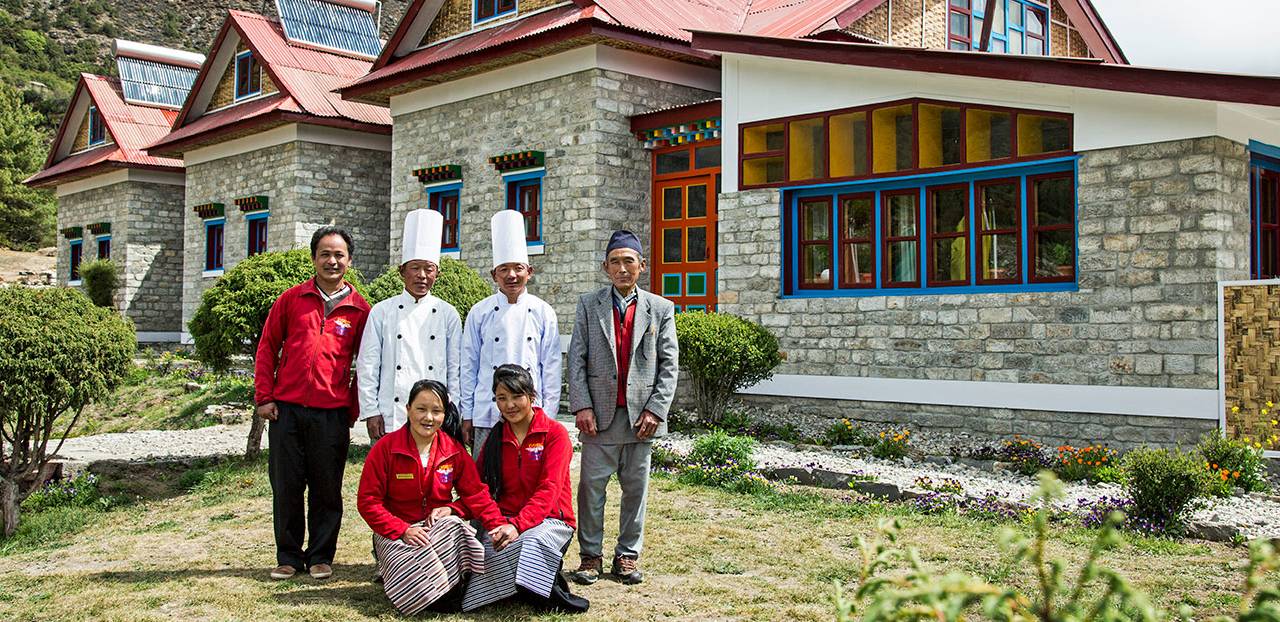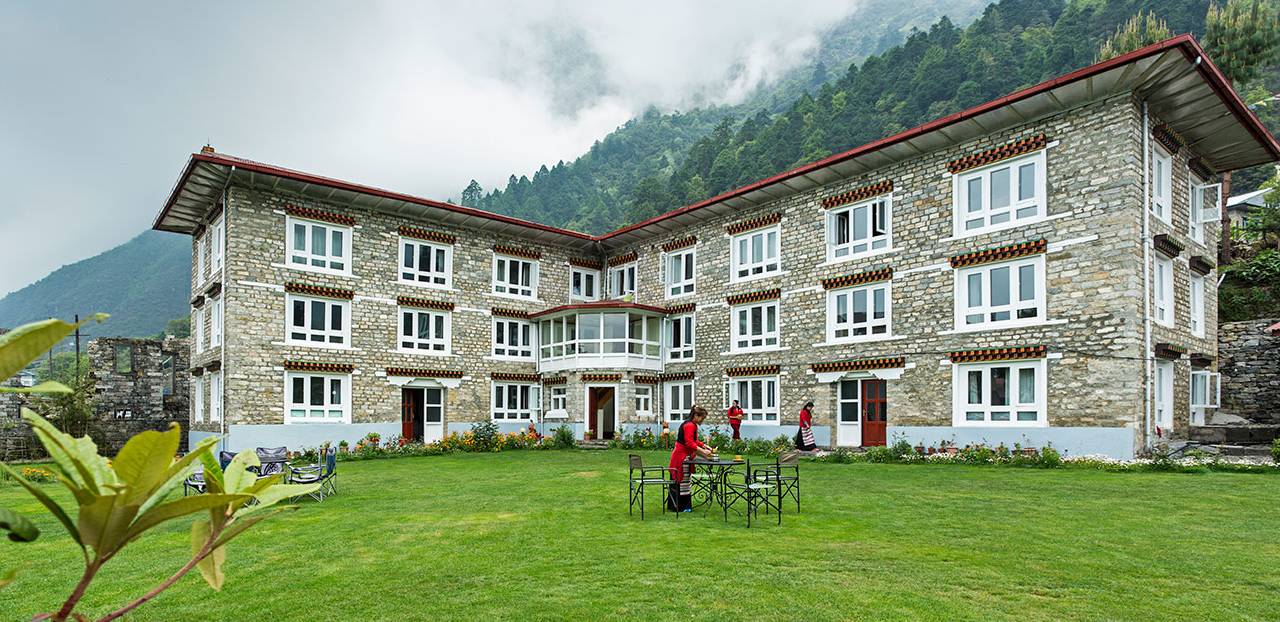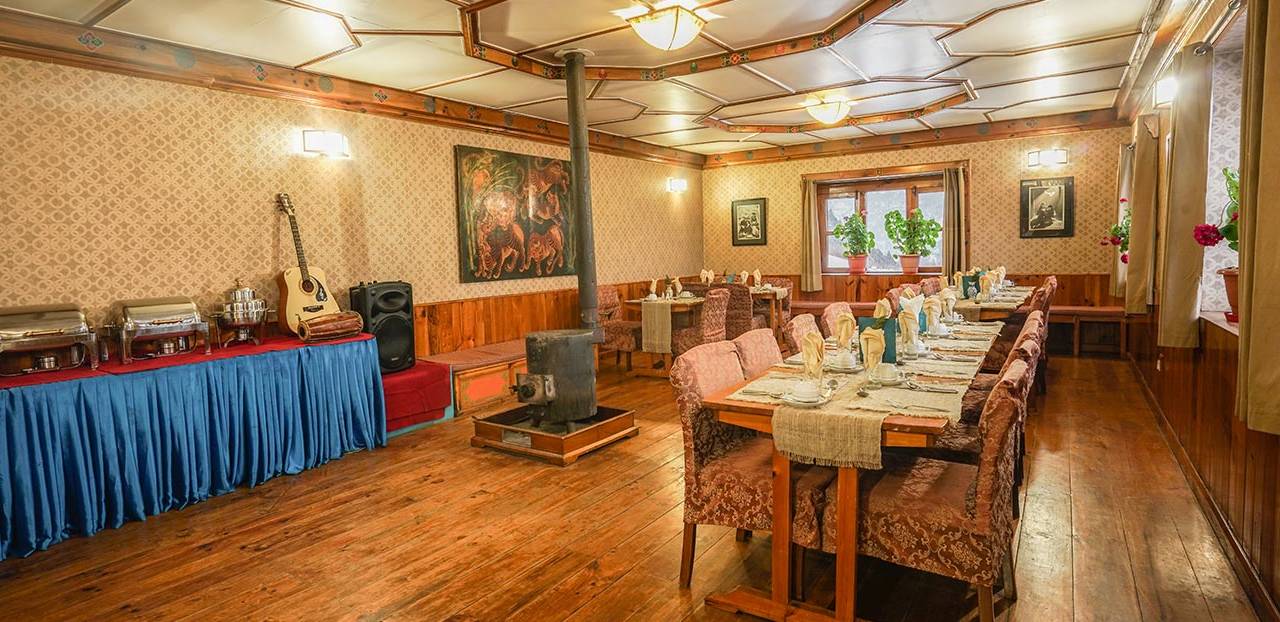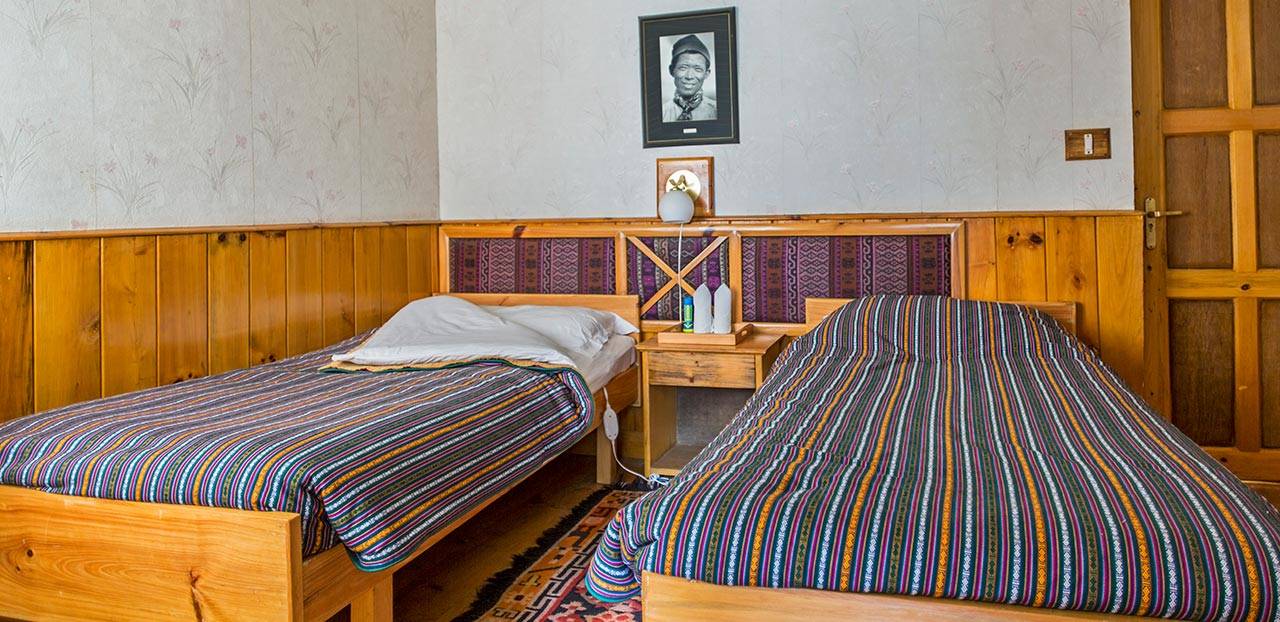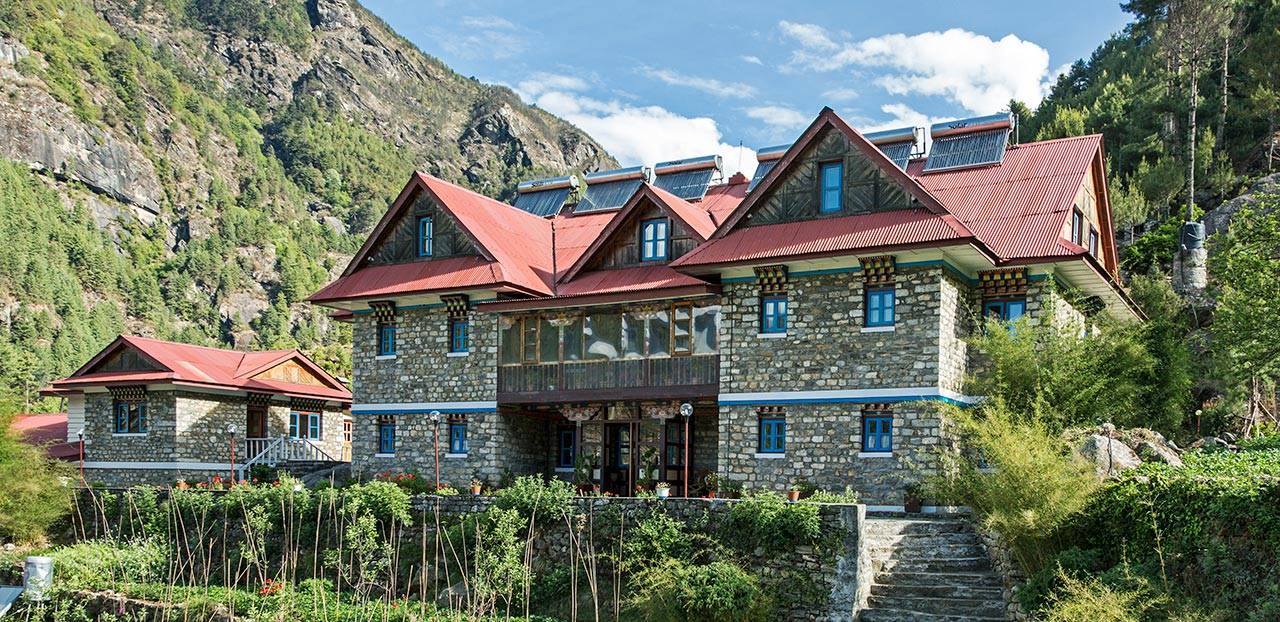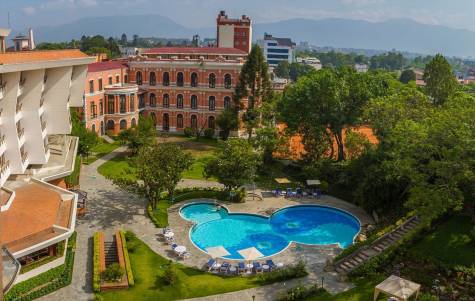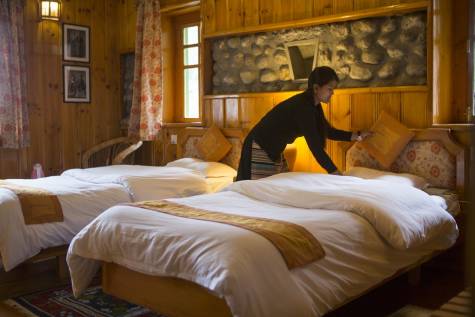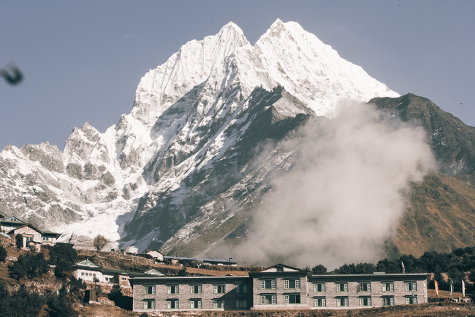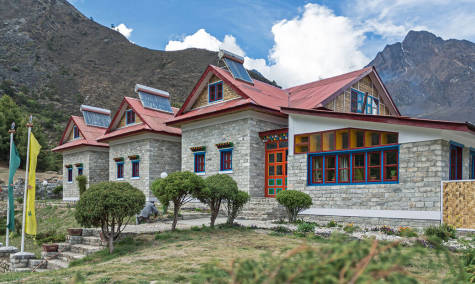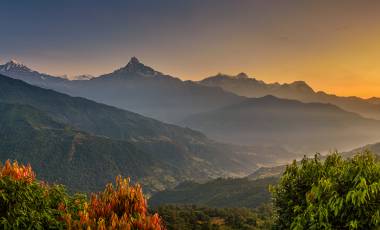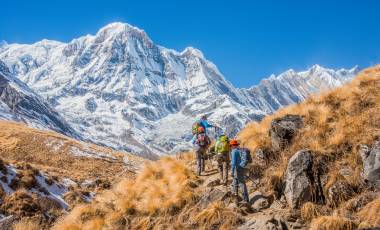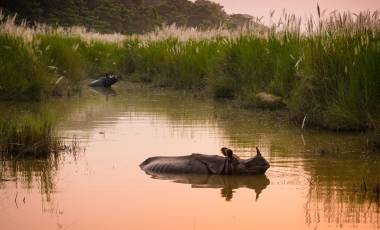- Walk legendary trails in the Everest region, guided by true mountain experts
- Stay in the top mountain lodges around, allowing you to unwind after our hikes
- Marvel at some of the world's tallest peaks, including Everest
- Soak up Sherpa culture in the bustling Namche Bazaar
- Head to the hilltop Tengboche Monastery for incredible mountain views
- Explore the monkeys and temples of Kathmandu

Everest Treks in Comfort
- Home
- Asia
- Nepal
- Walking & Trekking
- Everest Treks in Comfort
Post-trip Extensions
Chitwan Safari Extension
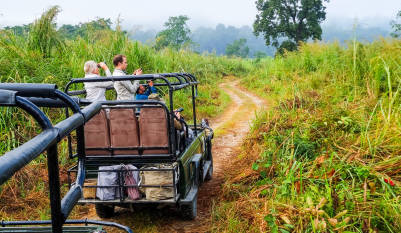
A five-day wildlife extension is the ideal opportunity to explore the lowlands of Nepal and enjoy rest and relax after the challenges of your trekking journey.
Travel from Kathmandu to your jungle lodge in search of roaming wildlife at Chitwan National Park. With the help of an expert naturalist, you explore the home of the one-horned rhino, while also spotting birds, crocodiles, deer and boar. Find a more detailed itinerary here.
Please ask your sales representative for more details. Prices listed are starting prices.
Code: XTNCTW
Price per person: £ 749
Mandatory Single Supplement: £ 365
Reviews
Add ReviewStart
Finish
Availability
Land Only Trip Price
Optional Single Supplement
Sunday Saturday
09 Nov 2025 08 Nov 2025
Wednesday Wednesday
19 Nov 2025 19 Nov 2025
Availability
Available
Land Only Trip Price £ 3399 £ 3399 Book with £ 849 deposit Book with £ 849 deposit
Optional Single Supplement +£ 1590
Availability
This departure is available for new bookings, and will be guaranteed to go ahead once it reaches minimum numbers. Please click Continue to proceed with booking or contact our Sales team for assistance.
View Trip NotesSunday Saturday
16 Nov 2025 15 Nov 2025
Wednesday Wednesday
26 Nov 2025 26 Nov 2025
Availability
Available
Land Only Trip Price £ 3499 £ 3499 Book with £ 874 deposit Book with £ 874 deposit
Optional Single Supplement +£ 1590
Availability
This departure is available for new bookings, and will be guaranteed to go ahead once it reaches minimum numbers. Please click Continue to proceed with booking or contact our Sales team for assistance.
View Trip NotesSunday Saturday
07 Dec 2025 06 Dec 2025
Wednesday Wednesday
17 Dec 2025 17 Dec 2025
Availability
Available
Land Only Trip Price £ 3599 £ 3599 Book with £ 899 deposit Book with £ 899 deposit
Optional Single Supplement +£ 1590
Availability
This departure is available for new bookings, and will be guaranteed to go ahead once it reaches minimum numbers. Please click Continue to proceed with booking or contact our Sales team for assistance.
View Trip NotesSunday Saturday
15 Mar 2026 14 Mar 2026
Wednesday Wednesday
25 Mar 2026 25 Mar 2026
Availability
Available
Land Only Trip Price £ 3599 £ 3599 Book with £ 899 deposit Book with £ 899 deposit
Optional Single Supplement +£ 1590
Availability
This departure is available for new bookings, and will be guaranteed to go ahead once it reaches minimum numbers. Please click Continue to proceed with booking or contact our Sales team for assistance.
View Trip NotesSunday Saturday
29 Mar 2026 28 Mar 2026
Wednesday Wednesday
08 Apr 2026 08 Apr 2026
Availability
Available
Land Only Trip Price £ 3699 £ 3699 Book with £ 924 deposit Book with £ 924 deposit
Optional Single Supplement +£ 1590
Availability
This departure is available for new bookings, and will be guaranteed to go ahead once it reaches minimum numbers. Please click Continue to proceed with booking or contact our Sales team for assistance.
View Trip NotesSunday Saturday
05 Apr 2026 04 Apr 2026
Wednesday Wednesday
15 Apr 2026 15 Apr 2026
Availability
Available
Land Only Trip Price £ 3699 £ 3699 Book with £ 924 deposit Book with £ 924 deposit
Optional Single Supplement +£ 1590
Availability
This departure is available for new bookings, and will be guaranteed to go ahead once it reaches minimum numbers. Please click Continue to proceed with booking or contact our Sales team for assistance.
View Trip NotesSunday Saturday
12 Apr 2026 11 Apr 2026
Wednesday Wednesday
22 Apr 2026 22 Apr 2026
Availability
Available
Land Only Trip Price £ 3699 £ 3699 Book with £ 924 deposit Book with £ 924 deposit
Optional Single Supplement +£ 1590
Availability
This departure is available for new bookings, and will be guaranteed to go ahead once it reaches minimum numbers. Please click Continue to proceed with booking or contact our Sales team for assistance.
View Trip NotesSunday Saturday
11 Oct 2026 10 Oct 2026
Wednesday Wednesday
21 Oct 2026 21 Oct 2026
Availability
Available
Land Only Trip Price £ 3799 £ 3799 Book with £ 949 deposit Book with £ 949 deposit
Optional Single Supplement +£ 1690
Availability
This departure is available for new bookings, and will be guaranteed to go ahead once it reaches minimum numbers. Please click Continue to proceed with booking or contact our Sales team for assistance.
View Trip NotesSunday Saturday
25 Oct 2026 24 Oct 2026
Wednesday Wednesday
04 Nov 2026 04 Nov 2026
Availability
Available
Land Only Trip Price £ 3799 £ 3799 Book with £ 949 deposit Book with £ 949 deposit
Optional Single Supplement +£ 1690
Availability
This departure is available for new bookings, and will be guaranteed to go ahead once it reaches minimum numbers. Please click Continue to proceed with booking or contact our Sales team for assistance.
View Trip NotesSunday Saturday
01 Nov 2026 31 Oct 2026
Wednesday Wednesday
11 Nov 2026 11 Nov 2026
Availability
Available
Land Only Trip Price £ 3799 £ 3799 Book with £ 949 deposit Book with £ 949 deposit
Optional Single Supplement +£ 1690
Availability
This departure is available for new bookings, and will be guaranteed to go ahead once it reaches minimum numbers. Please click Continue to proceed with booking or contact our Sales team for assistance.
View Trip NotesSaturday Friday
14 Nov 2026 13 Nov 2026
Tuesday Tuesday
24 Nov 2026 24 Nov 2026
Availability
Available
Land Only Trip Price £ 3799 £ 3799 Book with £ 949 deposit Book with £ 949 deposit
Optional Single Supplement +£ 1690
Availability
This departure is available for new bookings, and will be guaranteed to go ahead once it reaches minimum numbers. Please click Continue to proceed with booking or contact our Sales team for assistance.
View Trip NotesSaturday Friday
21 Nov 2026 20 Nov 2026
Tuesday Tuesday
01 Dec 2026 01 Dec 2026
Availability
Available
Land Only Trip Price £ 3799 £ 3799 Book with £ 949 deposit Book with £ 949 deposit
Optional Single Supplement +£ 1690
Availability
This departure is available for new bookings, and will be guaranteed to go ahead once it reaches minimum numbers. Please click Continue to proceed with booking or contact our Sales team for assistance.
View Trip NotesSaturday Friday
05 Dec 2026 04 Dec 2026
Tuesday Tuesday
15 Dec 2026 15 Dec 2026
Availability
Available
Land Only Trip Price £ 3799 £ 3799 Book with £ 949 deposit Book with £ 949 deposit
Optional Single Supplement +£ 1690
Availability
This departure is available for new bookings, and will be guaranteed to go ahead once it reaches minimum numbers. Please click Continue to proceed with booking or contact our Sales team for assistance.
View Trip NotesSaturday Friday
12 Dec 2026 11 Dec 2026
Tuesday Tuesday
22 Dec 2026 22 Dec 2026
Availability
Available
Land Only Trip Price £ 3799 £ 3799 Book with £ 949 deposit Book with £ 949 deposit
Optional Single Supplement +£ 1690
Availability
This departure is available for new bookings, and will be guaranteed to go ahead once it reaches minimum numbers. Please click Continue to proceed with booking or contact our Sales team for assistance.
View Trip NotesWould you like to include flights with your booking?
- ATOL protected
- Competitive flight prices
- Full refunds in the event of FCDO cancellations or major disruption at your UK departure airport
- Specialist support to rearrange flights and transfers
- Regional flights available from many UK airports
You may also like
The Adventure Begins Here
Get regular inspiration straight to your inbox from Exodus’ experts.
